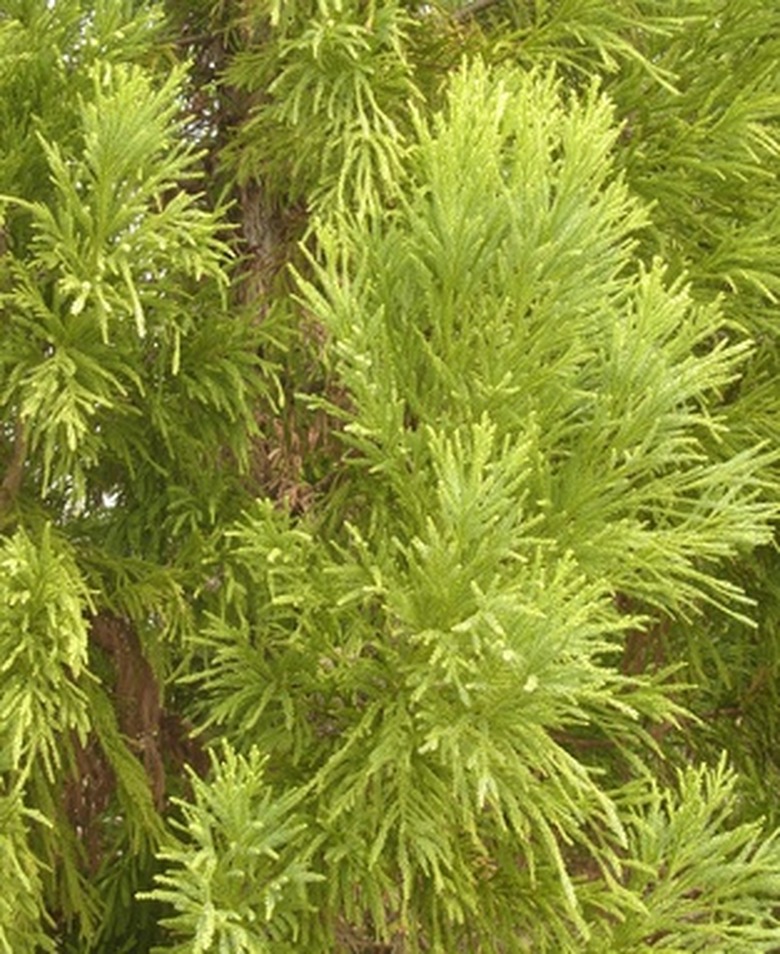Alternatives For Leyland Cypress Tree Screen
A valued fast-growing evergreen widely planted across the southeastern United States for screening and hedgerows, the Leyland cypress (x Cupresocyparis leylandii) grows nearly three feet annually. Its recent falling out of favor surrounds its susceptibility to bagworms and fungal canker infections. If soils become infertile or dry, this plant also falters.
Japanese Cedar
If your garden's acidic soil remains evenly moist year round and never gets soggy, the Japanese cedar (Cryptomaria japonica) becomes a prime candidate for screening once the Leyland cypresses are removed. Growing 2 to 3 feet annually, the foliage of Japanese cedar often becomes lightly bronzed in the winter months. The needles range from deep green to bluish green in color, and form billowing, soft clusters across the tree.
Normally growing 50 to 60 feet tall and 25 feet wide, consider using smaller-sized varieties such as "Elegans Compacta" or simply prune the top off of "Yoshino" once it reaches your desired height limit. This tree grows best in USDA Hardiness Zones 6 through 9.
- A valued fast-growing evergreen widely planted across the southeastern United States for screening and hedgerows, the Leyland cypress (x Cupresocyparis leylandii) grows nearly three feet annually.
Green Giant Arborvitae
This hybrid conifer rapidly grows to a mature height of nearly 60 feet with a width of 15 feet. Annually, expect the Green Giant arborvitae (Thuja 'Green Giant') to produce about 12-inches of additional height. Rarely plagued by pest or disease and tolerant of any fertile, well-draining soil, its deep green sprays of scaly needles lend a fine-texture to a garden. Grow this arborvitae in USDA Hardiness Zones 5 through 7, perhaps in the cooler areas of Zone 8, too.
Arizona Cypress
Gardeners who are faced with replacement of Leyland cypresses growing on drier soils should consider replacing them with Arizona cypress (Cupressus arizonica, also named Cupressus glabra). Especially well-suited to hot climates with low humidity, it does occasionally battle canker diseases. It matures to about 45 feet in height and 20 feet in width, with fine-textured blue-green foliage. In the American Southeast, where summers are wet and humid, expect the trees to live less than 20 years, never reaching towering proportions. The shallow root system may allow toppling in windstorms, but it does tolerate dry clay soils well. Some notable varieties include "Blue Ice", "Blue Pyramid", "Carolina Sapphire", "Compacta" and "Watersii". Grow Arizona cypress in USDA Hardiness Zones 7 and 8, and in Zones 9 and 10 only if the climate is arid during the summer.
- This hybrid conifer rapidly grows to a mature height of nearly 60 feet with a width of 15 feet.
- In the American Southeast, where summers are wet and humid, expect the trees to live less than 20 years, never reaching towering proportions.
References
- Floridata: Japanese cedar
- "Dirr's Hardy Trees and Shrubs"; Michael A. Dirr; 1997
